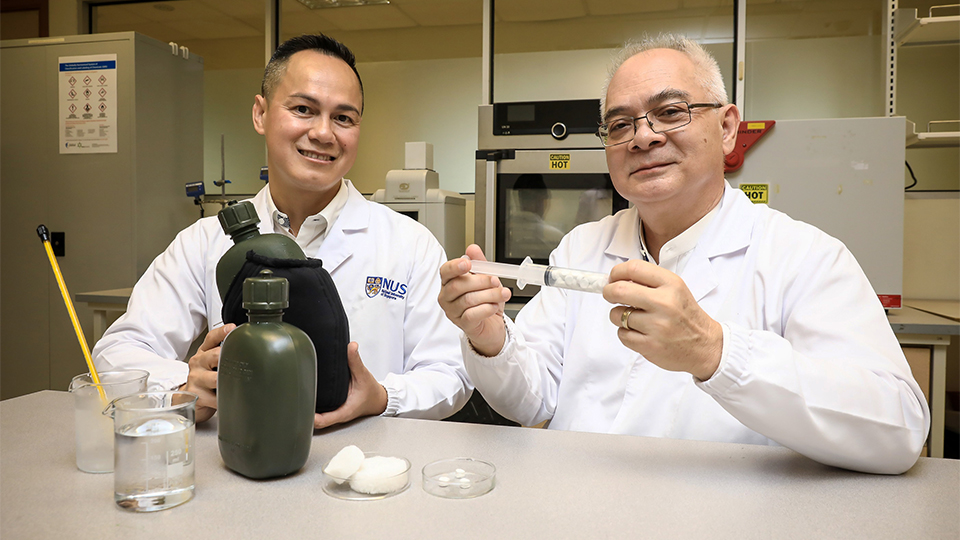Researchers from the National University of Singapore (NUS) Faculty of Engineering have successfully devised a fast, cheap and green method to convert cotton-based fabric waste, such as unwanted clothing, into a supermaterial.
The result is highly compressible and ultralight cotton aerogel that could be used to keep military water bottles cold and for effective control of rapid bleeding.
Soldiers regularly embark on vigorous physical activities in hot and humid conditions. An essential item in a soldier’s survival kit is the military canteen, which carries fluid for re-hydration and mitigation of heat injuries. A military canteen can typically hold one litre of water and maintain its cool temperature for about 30 minutes in our tropical climate.
In collaboration with DSO National Laboratories, the NUS research team developed a light-weight thermal jacket to maintain the temperature of ice slurry – crushed ice and liquid water – at 0.1 to 1.0 degree Celsius for more than four hours.
The thermal jacket weighs about 200 grams, and consists of a cotton aerogel layer embedded within commonly used fabrics to provide heat insulation.
“The heat insulation property of the novel cotton aerogels can be applied to various consumer products, such as cooler bags to keep food items fresh," said Professor Nhan Phan-Thien, NUS Department of Mechanical Engineering. "We also foresee tremendous potential for other high value applications, such as pipeline insulation and transportation of liquefied natural gas which needs to be stored at a low temperature.”
Effective control of rapid bleeding
Haemorrhage control devices are used to exert internal pressure to stop rapid bleeding and promote blood clotting.
Existing haemorrhage control devices comprise a syringe filled with small capsules of cellulose-based sponge, coated with chitosan, a natural agent that promotes blood clotting. The syringe is inserted into the wound to release the capsule, which expands and applies pressure on the wound to stop the blood flow.
However, the expansion and absorption rates of cellulose-based sponges are still relatively slow.
To address these limitations, NUS researchers developed highly compressible hybrid cotton aerogel pellets which are more effective than cellulose-based sponges currently used to treat deep haemorrhagic wounds. These pellets are simple and cost-effective to produce, and they can be easily integrated into a clinical syringe to be used as a haemorrhage control device.



